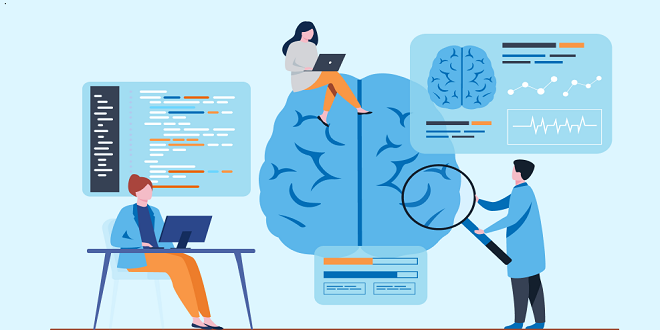
EHR software is used to record psychiatric services and providers. Selection may be affected by the size of the practice, available technology and patient demographics. Software for psychiatry helps in managing all aspects of a practice’s operation, including patient scheduling and charting, billing, and claim filing. Cloud-based and on-premise technologies allow users to save their data in either the cloud or on a business database. Cloud-based technologies are easier to use and less expensive than hiring IT staff.
Features of Psychiatric Software Systems
Multiple users can use the templates for assessment charts
SOAP stands to represent subjective, objective and planned assessment.
Notes on Development
Automated coding is used to ensure the highest E/M codes possible
E-prescribing and online scheduling, prescription and laboratory writing, clinical reporting, as well as other administrative and clinical tools for psychiatrists, are all often integrated into psychiatric electronic medical records (EHRs). Doctors should consider additional features that will make their clinics more efficient and provide better treatment when choosing an EMR/EHR for psychiatric care. For example, some EMRs allow you to create and save custom, reusable notes that can be used during patient visits. Many clinics would benefit from administrative tools such as patient scheduling or a calendar application.
These are the most popular features of electronic medical records software for psychiatry:
Workflow Management for Psychiatry:
Your EHR should function in the same manner as your behavioral health professional. Your software should facilitate patient communication and support, not hinder, the point of care. This includes the initial consultation, treatment and billing.
Advanced Notes Management:
To recall sessions from the past, psychiatrists need quick access to old notes. It is important that the progress notes be linked to the treatment plan within a psychiatric EHR. Note retrieval should also be fast.
Psychiatry and Health Templates:
Specialty psychiatric SOAP note templates cover anxiety, depression, delirium and psychosis as well as eating disorders, bipolar OCD, schizophrenia and suicide.
GAF graphs
Use the Global Assessment of Functioning to assess a patient’s psychological, occupational and social functioning. You can track the intensity of psychosocial elements by creating a graphic representation of current developments.
ICD-9 billing & coding for psychiatric service:
The language used by psychiatrists is their own. This is important for internal and external billing purposes. A quality psychiatric solution will provide extensive billing support comparable to mental health software, but without the additional codes you don’t require.
BENEFITS FROM USING PSYCHIATRY EM SOFTWARE:
One of the benefits of EHR software for psychiatry is electronic patient charting. Charting refers to the recording of all relevant patient information such as name, gender, past medical history, etc. If an EHR system does not exist, this method requires paperwork and handwritten data entry. Also, retrieving historical information will require sorting through old paper records.
EHR systems make data entry much easier, allowing users to electronically input information into patient records. Certain systems also have speech-to-text capabilities, which allow users to edit patient records using voice commands. For future reference, practitioners can simply search for and retrieve patient records stored in one location.
Notes from the patient: When interacting with patients, psychiatrists must keep track of notes and diagnoses. These notes also contain other data such as future treatment plans and progress reports. EHR systems allow practitioners to save patient notes in their database and record them. This scenario allows for note-taking using speech-to-text technology. Since patient records are stored in the database, practitioners can easily retrieve previous notes.
Management of billing: Medical billing requires a lot of documentation and paperwork. Things get more complicated if the payment is from Medicaid or a third party insurance company. A billing management system extracts patient data from patient records, and automatically populates it into billing documents. This saves time and reduces data entry.
Most systems offer two options for billing management. Users can either manage their own billing or hire a vendor to do it. Vendor outsourcing is becoming more popular as it eliminates the need to hire additional staff to handle billing and claims processing. Both billing systems can accept cash, Medicaid, as well as third-party insurance claims.
Calendars and schedule integration: It can be difficult for psychiatrists to plan patients. If a practitioner’s schedule is not up-to-date and easily accessible to booking staff and receptionists, overbooking could occur.
EHR technology allows scheduling to be more efficient by making all the practitioners’ calendars available in real time. The calendar automatically updates when an appointment has been confirmed. This feature can be used by staff to reschedule appointments in the event that a doctor is unavailable or on unscheduled leaves.
EHR software packages available on the market include automatic reminders. These messages send out text messages to patients and emails with information about upcoming appointments.
Third-party insurance management. Manually managing their operations can be difficult when searching for medical codes that allow them to file claims with third party insurance companies or Medicaid. It can take time to find the codes for different conditions, as each condition has its own ICD-10 or CPT code. Any coding error could result in claims being denied.
The database of an EHR program stores all patient codes, which makes it easy to search quickly. When users type in disease or therapy names, they get suggestions in a drop-down menu. This eliminates the need to manually search treatment codes and illnesses, and saves time.
E-prescribing. This allows doctors to send prescriptions to patients to their preferred pharmacy. Patients can bring their medical cards to the pharmacy counter to pick up their medication. It helps pharmacies ensure that the drug is on hand before a patient arrives.
Patient portal. Patient portal is a secure website that allows patients to access their diagnosis, medication, treatment plans and test results. This simplifies communication and allows practitioners to quickly transmit test results.